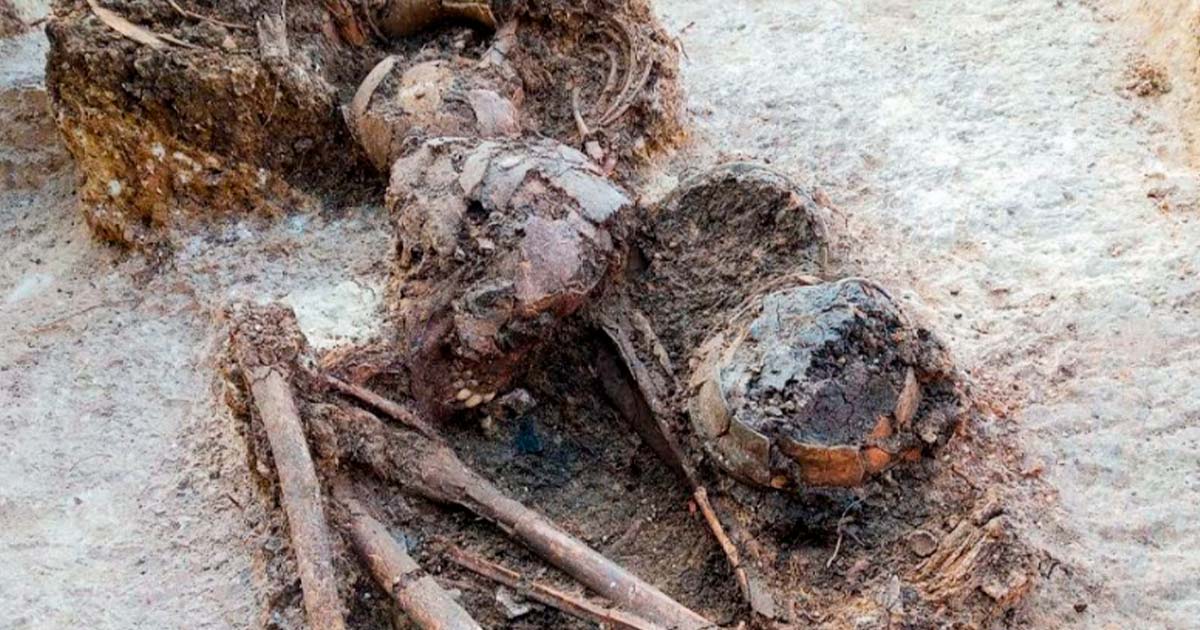Major Human Burial Discovery Unveiled at Cima de San José, Mexico
In a huge archaeological discovery, authorities in Mexico have announced the recovery of the largest osteological sample of ancient inhabitants from the southwest region of Tamaulipas. The site, known as Cima de San José, has yielded the remains of 48 individual and multiple burials linked to the Pueblo and Huastec cultures. They are accompanied by a rich array of grave goods, offering a unique window into the region's ancient cultural interactions.
This significant find was the result of archaeological salvage operations conducted during the construction of a highway connecting the municipalities of Mante, Ocampo, and Tula. The INAH Tamaulipas Center has been overseeing the operations, under the supervision of the federal Ministry of Culture.
- Archaeologists Unearth Trinket Filled Tombs from Mexico’s Huastec Culture
- Mexican Farmers Unearth Ancient Statue of Elite Mesoamerican Woman

The vestiges of buildings, hearths and the large number of burials and their offerings are indicative of its importance. (INAH Tamaulipas Center)
Significant Location of Cima de San Jose
Cima de San José owes its name to a hill that was flattened in order to be occupied. Being located in the transition area between the forest of the Sierra Madre Oriental and the Chihuahuan semi-desert, there is a wide range of contrasting flora, and the coexistence of pines and oaks with agaves and cacti can be observed.
Preliminary analyses suggest that the site, dating between 250 and 650 AD, served as a vital connection node between the Río Verde, southwest Tamaulipas, the Sierra de Tamaulipas, and the lower Pánuco Basin.
Esteban Ávalos Beltrán, the project coordinator, highlighted the importance of this discovery, stating, “The burials at Cima de San José have surpassed previous ones in number and provide a possible connection between the Early and Middle Classic periods.”
The site, with 18 hearths found in the burial areas, offers plenty of material for confident dating using various techniques.
Among the intriguing findings at the site is the burial of a young male individual adorned with a necklace of 29 sea snail earrings, fashioned to resemble the fangs of carnivorous mammals. Additionally, an individual with distinct dental mutilation was identified, a practice that involved modifying teeth to sharp or pointed shapes.
- Tlazolteotl: An Ancient Patroness and Purifier for all things Filthy
- El Tajín, The Lost City of a Mysterious People

The impressive necklace found at Cima de San Jose site. (INAH Tamaulipas)
The archaeological team also noted the striking variety of associated burial materials, including Black and Red Zaquil type vessels, ceramic pipes, seashell earrings, and green stone earrings. The presence of these goods points to the site's importance in the beliefs and sociopolitical organization of its ancient inhabitants.
Dr. Jesús Velasco, leading the Physical Anthropology Laboratory at the INAH Tamaulipas Center, has been instrumental in investigating aspects of the life and health of these ancient people. Notably, nine skulls exhibiting cranial modification, a practice reminiscent of early groups from the northern Gulf Coast and Southwestern United States were discovered.
Ávalos Beltrán concluded, “This excavation is one of the last sites that have been excavated with scientific rigor in the southwest of Tamaulipas, and the work carried out will allow us to reconstruct some aspects of the ancient inhabitants of Cima de San José.”
This discovery at Cima de San José not only enriches our understanding of the region's pre-Hispanic past but also sheds light on the intricate cultural and ritual practices of its ancient people.
This article is an AI rewrite based on the press release by INAH.
Top image: One of the 48 burials found at Cima de San José, along with an array of votive deposits. Source: INAH Tamaulipas Center
By Gary Manners

















